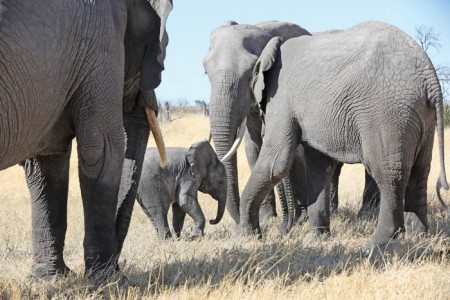What's killing elephants in the North West?
Mbongeni Mguni | Friday May 22, 2020 12:19


Any time now, the results of post-mortems into the deaths of nearly 60 elephants in the far northwest are due. Since March, elephant carcasses have been found in the lush veldt around Seronga and Eretsha villages, with wildlife authorities quick to rule out poachers as the cause.
“So far, veterinary officers have ruled out the possibility of poaching because all carcasses of the elephants were found intact,” Department of Wildlife and National Parks officials wrote in a statement this week.
They cautioned Batswana not to consume the carcasses saying, “this could be detrimental to health”.
Over the years, Seronga and Eretsha, located in the eastern Okavango panhandle, have been some of the areas hardest hit by human-wildlife conflict involving elephants.
The pachyderms, which are estimated to number 130,000 in Botswana, are concentrated in the country’s northwest, around the Okavango Delta where lush wetlands provide ample supplies of the 250 kilogrammes or so elephants need to eat daily.
As noted by Mmegi photo and travel journalist, Thalefang Charles, in Seronga elephants are not viewed with ‘touristy’ astonishment and admiration. They are feared.
“Seronga and many villages along the eastern Okavango panhandle have the worst human-elephant conflict. A number of people have died from being trampled down by elephants, and many farmers lose their crops every season due to elephants.”
Seronga chief, Kgosi Maeze Maeze of Seronga was unequivocal about the problem in an interview with Mmegi last August.
“There are many elephants here and they have destroyed the vegetation. Our goats and small wild animals are under threat because there is not enough grass for eating and hiding. They are out of control. The people are not cultivating crops because of the elephants and they now rely on government destitute programmes although they are able and capable to feed themselves.”
The fact that the carcasses have been found in and around Seronga have raised suspicions that farmers in the area have taken their war with elephants to a new extreme.
While common across the border in Zimbabwe, poisonings of elephants are unheard of in Botswana. Some local farmers have been previously reported to poison livestock carcasses to prevent the influx of hyenas, but instances of actually poisoning fields and water bodies to keep elephants away are unprecedented.
The entire Okavango ecosystem underwent a crippling drought last year, one of the worst in decades, but bounced back strongly this year with flooding of the entire system.
Speculation has risen that communal farmers, noting a rare bumper harvest, may have taken extreme steps to protect their crops. Those who lean towards this theory point to the fact that the carcasses are being found at the tail-end of the cropping season, when crops have matured and are ready for harvest. Dimakatso Ntshebe, regional wildlife officer in Maun, says that theory does not hold water.
“There has never been anything like poisoning of elephants around here,” he says.
“Why would the poison kill elephants only and not the scavengers like vultures and others, which have been feeding off the carcasses?
“Also, why are other species not succumbing to this poison? Why would elephants be the only animals dying?”In addition, the plentiful rains this season have actually reduced elephant-human conflict, as the abundant water sources and pasture in the bush have meant elephants do not need to travel near villages or into fields for food. In drier periods where the supplies in the bush run out, elephants travel through villages such as Seronga to get closer to the Delta’s channels for water and food, but this season they have not had the need to.
Ntshebe, who is leading a team investigating the mysterious deaths, says a likely suspect could be anthrax, which often flares up in the region. In October 2017, more than 100 hippos were found dead in the Okavango River from anthrax, a highly contagious bacteria that transmits very easily from one animal to another at death.
Even here, however, Ntshebe has his doubts.
“The likelihood of anthrax is minimal because the disease is simply not in season.
“Anthrax is always present in the soils, but outbreaks generally occur during the dry season between July and December when animals are weaker.
“It’s possible that the disease is occurring earlier, but that would be doubtful.”
Samples from the dead elephants are still in a local laboratory undergoing testing. The initial testing is reportedly for anthrax and should this be the culprit, the results will be known on Friday (today).
However, should anthrax be ruled out, testing for other pathogens will require that the samples be sent to South Africa meaning results will take longer.
“At this point, we cannot rule anything out, from poisoning to anthrax to others. We will only know when the results are out,” Ntshebe says.
